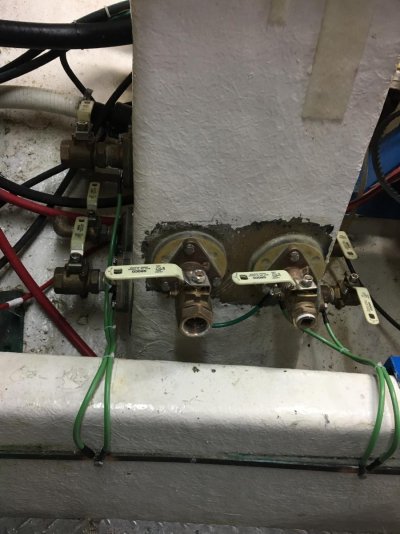Angus99;
I've got something similar going on. I have a copper strip running down the center of the boat to which all the green bonding wires attach to. But when it get's to the stern, there is wire that attaches from that strip to a stainless plate near the transom that the auto pilot equipment is mounted to, then out the other end of that plate to the anode. So this stainless plate is being used as part of the circuit. Not the way it should be.
So I'm going to run the wire from the copper strip directly to one of the anodes studs (the way it should be). Then I will run a second wire from the other stud to a bus bar, then run separate wires from the bus to all the parts needing bonding at the transom (rudders, struts,thru hull, etc.) Then work my way forward, separating all the bonding wire connections, clean with a wire brush or replace terminal, apply anti corrosion , and re-attach. Should be good for a couple of days on my knees!




 .....especially how easy and inexpensive it is.....
.....especially how easy and inexpensive it is.....